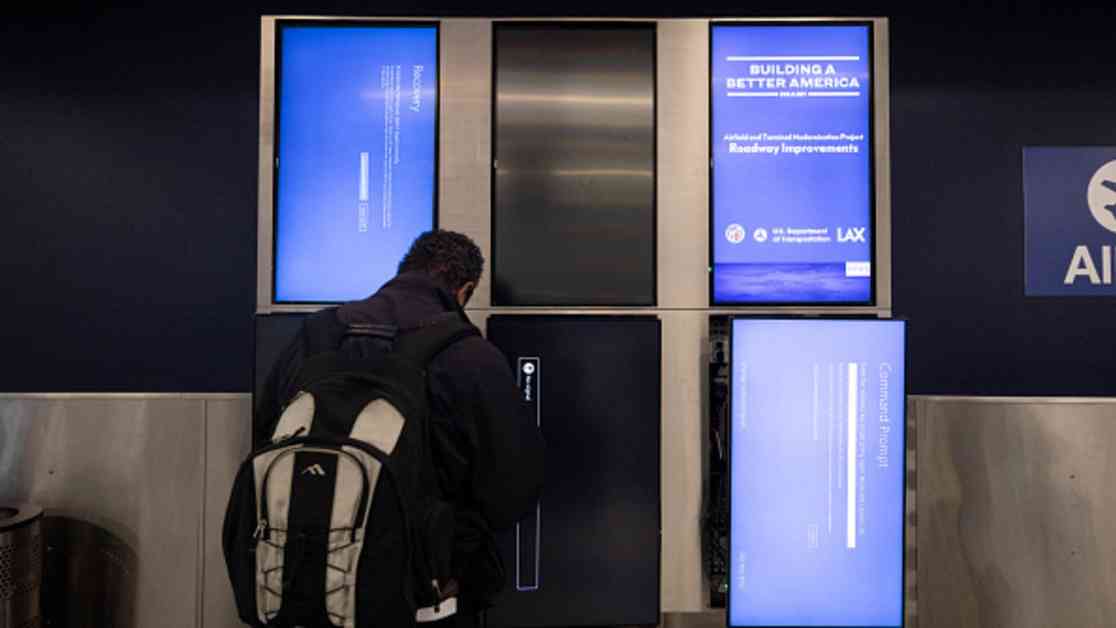Microsoft Cybersecurity Summit: Strategies for Preventing Future Cyber Attacks
In a world where cyber threats are constantly evolving and becoming more sophisticated, the importance of cybersecurity cannot be overstated. The recent CrowdStrike outage that caused chaos for businesses worldwide serves as a stark reminder of the need for constant vigilance in the digital realm.
The incident, which occurred in July, was triggered by a faulty software update from CrowdStrike, a cybersecurity firm. The update caused millions of Windows computers to crash, leading to widespread disruptions in various sectors, including airlines, banks, TV channels, and other businesses. The fallout from the outage was significant, with airlines canceling thousands of flights, logistics companies experiencing package delivery delays, and hospitals having to postpone medical appointments.
To address the aftermath of the CrowdStrike outage and explore ways to prevent similar incidents in the future, Microsoft has announced that it will be hosting a cybersecurity summit in September. The conference will bring together cybersecurity firms, including CrowdStrike, to discuss strategies for evolving the industry and enhancing security measures.
Microsoft’s Response to the Outage
Following the CrowdStrike outage, Microsoft has taken a proactive approach to addressing the issue and preventing future cyber attacks. The company is committed to working with cybersecurity firms to find ways to improve the security of Windows computers and mitigate the risks posed by faulty software updates.
One of the key areas of discussion at the upcoming cybersecurity summit will be the reliance of cybersecurity applications on kernel mode, a privileged part of the Windows operating system. Currently, software from CrowdStrike, Check Point, SentinelOne, and other endpoint-protection providers depend on kernel mode for monitoring and preventing malware attacks.
However, the use of kernel mode can also pose risks, as a failure in an application running in kernel mode can lead to system-wide crashes. This was evident in the case of the CrowdStrike outage, where a buggy software update caused Windows computers to display the dreaded “blue screen of death” and crash.
Moving Forward: Exploring Alternatives to Kernel Mode
To address the vulnerabilities associated with kernel mode, Microsoft is considering alternative approaches that could enhance the security of Windows computers and reduce the risk of system-wide crashes. One potential solution is to shift the focus towards user mode, a more isolated environment where applications operate independently and do not impact each other.
By encouraging cybersecurity applications to rely more on user mode instead of kernel mode, Microsoft aims to create a more secure computing environment where the failure of one application does not result in the collapse of the entire system. This approach aligns with Apple’s strategy for macOS, which limits kernel access and discourages developers from using kernel extensions.
At the cybersecurity summit, participants will also explore the adoption of emerging technologies such as eBPF and memory-safe programming languages like Rust. These technologies offer additional layers of protection against cyber attacks and can help prevent system crashes caused by faulty software updates.
Microsoft’s Commitment to Cybersecurity Innovation
As a leader in the cybersecurity industry, Microsoft is dedicated to driving innovation and advancing security measures to protect users from cyber threats. The company’s collaboration with cybersecurity firms at the upcoming summit reflects its commitment to fostering a collaborative approach to cybersecurity and finding solutions to complex challenges.
While Microsoft competes with CrowdStrike through its Defender for Endpoint product, the company has made it clear that all participants at the cybersecurity summit will be treated equally and no preferential treatment will be given. This inclusive approach demonstrates Microsoft’s commitment to promoting transparency and collaboration within the cybersecurity community.
Looking Ahead: A Stronger, More Secure Future
As the cybersecurity landscape continues to evolve, it is essential for industry leaders to come together to address the challenges posed by cyber threats and work towards a more secure future. The Microsoft cybersecurity summit represents a significant step towards enhancing the security of Windows computers and preventing future cyber attacks.
By exploring alternative approaches to kernel mode, adopting new technologies, and promoting collaboration within the cybersecurity community, Microsoft is paving the way for a stronger, more secure digital ecosystem. The insights and strategies developed at the summit will play a crucial role in shaping the future of cybersecurity and ensuring the protection of users worldwide.
In Conclusion
The CrowdStrike outage served as a wake-up call for businesses and cybersecurity firms worldwide, highlighting the vulnerabilities that exist in our digital infrastructure. By coming together at the Microsoft cybersecurity summit, industry leaders have an opportunity to collaborate, innovate, and strengthen security measures to prevent future cyber attacks.
As we navigate the ever-changing landscape of cybersecurity threats, it is crucial for organizations to remain vigilant, proactive, and committed to enhancing security measures. The insights and strategies developed at the cybersecurity summit will be instrumental in shaping the future of cybersecurity and ensuring the protection of users in an increasingly interconnected world.

















